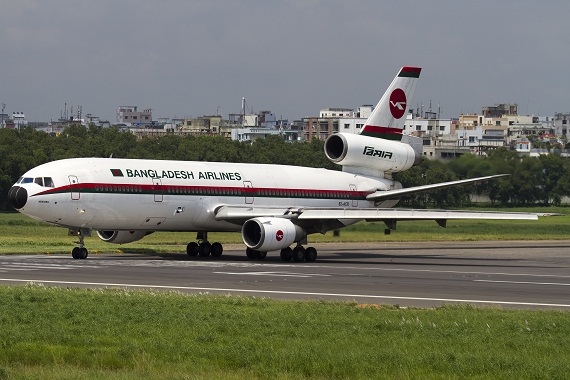Bangladesh is a country completely different to what one knows from Europe, the USA or the Middle East. At first sight, the country seems extremely poor, with very harsh living conditions. It is a walk through Dhaka, the capital of Bangladesh that will allow a bigger picture of this incredible country and its citizens. Globalization has not gone by unnoticeable. The country has positioned itself as a place for manufacturing (e.g. textile products) or heavy industry, as well as manpower intense work, such as the dismantling of ships. Major economic factors for the country are its workers abroad, and the money they send home to their families. It is the people’s openness, friendliness and hospitality that stand in complete contradiction to the negative myths surrounding this country. Luckily, the dignity of man is not measured by his savings account, but rather by the honorable culture of the people. Under this aspect, Bangladesh is an extremely wealthy country and surely an interesting place for everybody to visit. It is this culture of friendliness, openness and hospitality that is already present upon boarding a flight of Biman Bangladesh Airlines, the countries national carrier. Be it in the skies or on the ground, the national airline and its staff are a worthy representative of Bangladesh!
Biman, the Bangladesh gateway to the world
Even though Biman is a legend within the aviation industry for efficiently and safely operating classic airliners such as the Fokker 28 and the DC-10, very little is known about Bangladesh’s gateway to the world. One of those interesting facts for example is that “Biman” is the Bengal word for “plane”. As of 09/2013, the fleet of Biman is comprised of:
B737-800 (2 active, further to be delivered)
A310-300 (2 active, to leave the fleet soon)
B777-200/300 (2 active, further deliveries 2014)
DC10-30 (2 active, retirement 12/2013)
Biman is a state owned airline, with equivalent state influence on all levels of decision making. Be it the revising of new paint schemes (such as seen on the B737 fleet) or the complete future aircraft fleet. With rising fuel prices and broader mission tasks, airframes such as the B777 become a logical choice for operations. No doubt, the DC-10’s days were counted already some years ago. With the retirement of the Fokker 28 aircraft on short haul ops not too long ago, and the coming DC-10 retirement on mid- and long haul ops, Biman is set for a modern future fleet, comprised of B777, both 200s and 300s, and the B737-800 narrow body aircraft, as well as the new flagship B787 arriving in the farther future. Some ATRs or Dashs might join as replacement for the F28s as well in the future. The midterm perspective for the last two remaining A310-300 is not too bright either, especially with 2 more B777 arriving until March 2014. The introduction of a completely new cabin interior with the B777 and the B737 marks a very big leap in product quality as well as comfort. This does not mean that the flying experience on a DC-10 or A310 is inferior. Keeping in mind that tastes are different, the flowery interior does not resemble current trends in cabin design. For an aviation enthusiast the stylish DC-10, A310 and F28 cabins are a true delight.
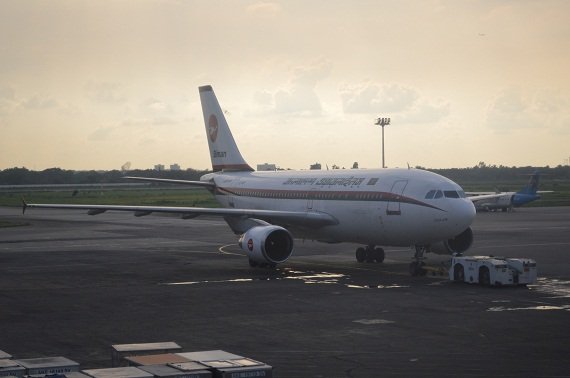
Currently MIAT Mongolian Airlines is operating a B767-300 on a wet lease basis for Biman. This is typical for September, since the Hajj Season (pilgrims going to Makah in Saudi Arabia) starts. With the additional capacity, Biman can cope with the task of transporting up to 60.000 pilgrims per season. As a side note, during this period, there are lots of Saudi B747 and B777 in Dhaka on a daily basis, such as other carriers operating with big metal. The pilgrims’ journeys are very well organized, boarding a fully booked B747 does not take too long, officials with loudspeakers coordinate the travelers and queue them in lanes up to 50 meters, throughout Dhaka Airport. A Hajj is executed in a very centralized way, up to the point of assigning a certain amount of travelers to a certain airline. In the case of Biman these were approximately 55 thousand pilgrims in 2012. The regular operated DC-10 services are switched to the B767 wet lease (in 2012 by Blue Panorama), whereas the D1C (three letter code of the DC-10-30) operates as a backup, on Saudi routs, and on Hajj services.
Even though Biman is known for being notoriously late, the reasons for these delays are various and often not a sign of lacking professionalism. Often planes are held back, so that passengers can reach their connection flights, something not usual with western carriers any more. But in some cases it is simply the lack of flying machines. And nowadays any delay picked up by a single aircraft affects the entire operating fleet. That being said, within the last few months and weeks, Biman performs very well in terms of on time arrivals, and the wet-leased B767 brings a substantial relieve. Currently, it seems that the B767 will operate even after the DC-10s have left the fleet. A Rolls Royce powered Mongolian B767 with indigenous crew is something wonderful, unfortunately it just can't reach the elegance of Bimans DC-10s.
The network of Biman Airlines includes routs to Europe, the Middle East and Asia. Some routes are offered as a connection flight, others make less sense for transfer. In Europe Biman serves London, Manchester and Rome. Historically the Bangladeshi carrier served much more destinations. The lack of available aircraft forced the company to shut down some of the routes. But with a perspective fleet of 10 B777 and some B787s, there are plans for resuming most of the traditional destinations, not only to Europe, but throughout the world. Asia still remains a stronghold for Biman, since there are tight connections to countries such as UAE, Saudi Arabia (and the Middle East in general) and India. Other cities served include Hong Kong, Bangkok, Singapore and Kathmandu.
The typical Biman customer is probably a Bangladeshi citizen working abroad. From news reports, Bangladesh is known for its textile manufacturing companies and the along going problems with this kind of industry. It is less known that there are unbelievably many Bangladeshis working abroad, in the construction business as well as in the inherited textile industry. As a matter of fact, the face of many cities (such as Dubai) would not be the same without the power of Bangladeshi work force. Lots of wealthy families within the gulf region are dependent on the help and care of Bangladeshi housekeepers. All these expatriate citizens create a demand for air traffic back home. Even though the numbers of Bangladeshis abroad are very high, most of cannot afford more than a yearly journey, or are plain not allowed to, depending on their contract. But demand is enough justify a route network such as the one of Biman. The typical customer on a Hong Kong route for example is a bit different, usually being a Bangladeshi or foreign business man. Lots of business travelers are frequent flyers. The tenth flight for them is free of charge, as a reward to their loyalty. The local Biman stations look very well after these customers, and if there is no business class aboard, they are placed up front in the DC-10, adding a bit of prestige feeling. And last but not least, let's not forget the thousands of Muslim pilgrims to Makah during the yearly Hajj Season. Inbound tourism doesn't play a role at all in Bimans traffic.
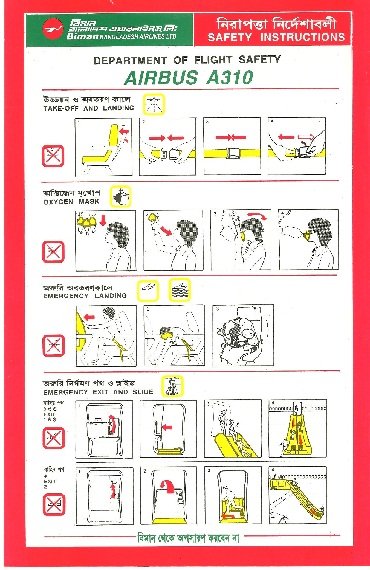
Keeping the above mentioned typical customers in mind, there is a myth of the rude, unfriendly Biman Airlines cabin attendant. For outstanding passengers this is a conclusion easily to be drawn, but is an unfortunate misinterpretation. Just imagine the gate at Dubai Airport Terminal 1. A fully booked A310 is waiting for its service to Dhaka, via Chittagong. All seats in the gate area are occupied by workers traveling home after a long time abroad. Some of them see their family for the first time since 36 months. Since the last time they saw their children, they grew by 7 cm. They are exhausted after a long time of work in the dessert and can't wait to see their loved ones, 2 pieces of bags are already checked in and the 5 duty free bags full of presents for the family are repacked into 2, since more will not be allowed on board. When the doors open, the guys start storming the plane with the hope of getting home as soon as possible, taking the first seat they can get. As a logical consequence the system of boarding a plane (that works for a Let-410 as well as for an A 380) fails. People sit where they want, even in business class though not being booked on it. Overhead bins are filled to the maximum. And tradition has it, that all of those passengers expect the best service from the crew, as much catering as possible, and a fast and on-time flight back home – the next few months in the dessert, away from family, are already set. Biman Flight Crews work with stunning professionalism under these circumstances, giving strict orders were necessary and helping where help is needed. This may seem rude to travelers not familiar with this kind of background information. The true perfection of the Biman crew on the flight from Dubai to Dhaka could be seen in the face of an injured worker going home.
Bangladeshis working in the UAE are often treated as cheap, disposable manpower without rights. If one gets hurt, he has to leave the country and get along on his own. The flight crew noticed the injured worker on our A310-300 and offered him a seat in business class, as he could sit there with less pain. They took care of him and looked after his wellbeing. The brilliance of a flight attendant is not the ability of placing an overloaded tray in front of a passenger, but taking personal responsibility for those on board, and maybe even break the rules in favor of a passenger needs. As a matter of fact all Biman Airlines employees, be it in the air or on the ground in Bangladesh showed the same spirit and dedication to the company. The airlines management can be proud of its team and the identification of each and every one of them with Biman.
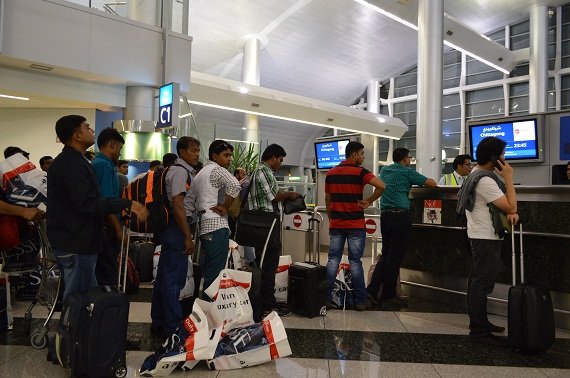
The crew on the MIAT wet lease flight bound for Abu Dhabi stated itself, that they have never found themselves in a harder working environment than in the one they face in Bangladesh. A trained eye will see nothing else but extremely professional Biman staff as well as a MIAT crew committed to their work until complete exhaustion. There is no reason to believe that all the wonderful people working for this unique airline would not give everything for Biman and the satisfaction of its customers! The ability of working successfully with passengers of such diverse cultural, economic and social background is an overwhelming sight and a pleasurable experience.
Catching the last of a kind
With the DC-10 leaving the fleet until December 2013, it becomes increasingly hard to catch one for flying with it. The former trunk routs to DXB and AUH are now served with the A310 and B777. Therefore it has become difficult to predict the DC-10’s routes. Hong Kong is another good bet, but one might end up with a B777. The guaranteed Saudi routes pose a problem to travelers from “the West”, since Saudi Visas are not issued on a short term notice, and Hajj flights are accessible only for Muslims. To sum it up, catching the DC-10 is a hassle, and only a few days in advance it is clear when and where to it will operate. This is only logical, since any airline would rather operate a B777 than a DC-10. With Biman being very open to the needs of aviation enthusiasts, the company answers all inquiries and can inform about guaranteed routes a few days in advance. But planning for a longer stay in Dhaka makes sense, in order to react flexible on eventual route changes. Nothing is more frustrating than watching these beauties land and takeoff without being on board.
Having booked a trip on the Abu Dhabi – Chittagong – Dhaka leg on board a Biman DC-10 well in advance, the flight was subject to an aircraft change. Luckily Biman maintains the flight status section on their web page very well, therefore enough time was left to change the flights. The result of the rebooking was even better:
1st leg: A310-300 Dubai – Chittagong – Dhaka
2nd leg: DC-10-30 Dhaka – Hong Kong – Dhaka
3rd leg: B767-300 Dhaka – Abu Dhabi
Dubai – Dhaka with the A310 S2-ADK
The nearly fully booked A310 was a classic Biman flight, with a cabin full of workers going home to their families for a few days. The flight was scheduled to leave DXB terminal 1. For those who fly from Dubai Airport the first time, the level of innovation and support at the Emirates main airport is impressive. Biman check-in usually takes place at sector D, just a hop away from the metro station “terminal 1”. Aviation enthusiasts usually tend to be early at the check-in desk, for getting the best seats. In any case, they won't be first at a Biman flight. If a Biman agent is spotted at a check-in counter, within seconds the passengers start gathering in front of it. And we are not talking about a single passenger waiting 3 hours before departure. At least half of all the travelers lined up at least 3 hours prior to departure on flight BG48 on that day. All of them wanted to check-in immediately. A Biman information banner informed travelers of the allowed sizes of hand luggage – it didn’t help.
After passing through the security check and the migration desks, most of the Bangladeshis used their time for duty free shopping. Although the gate was closed, people gathered in front of it. Judging from the amount of duty free bags, DXB should have been sold out. Some carried five, maybe six bags. Most of them re- packed everything, as they would otherwise have needed to check in the luggage at the gate. The station manager had a complete roll of bag-tags that have been waiting to be used.
Time for check-in
After an hour of waiting and chatting with the guys traveling, the crew arrived one by one, led by a female captain. The flight was operated on time and boarding started rather early. From the moment the doors opened, the masses started moving, and there was virtually nothing that could stop them. With 2 passengers that have been booked in business class, this section was the first to fill up, since the seats seemed way more comfortable than the ones in the rear of the plane. The crew did everything to funnel the passengers through business class to the rear part of the cabin. It would be an illusion to believe that anybody on board this aircraft cared about seat assignments. It was free seating Bangladeshi style. But after not seeing their loved ones for such a long time, who could have blamed them?
After a superb performance by the crew, all travelers were seated and the A310 was ready to leave Dubai. The doors are closed, and the cabin crew informs the passengers on some flight details – Insha'Allah (commonly used in Muslim countries, meaning “if god is willing) we would arrive on time. Takeoff from such a town by night is always impressive to witness. Unfortunately flights during darkness are less of a blessing for the spotter’s heart. After a few minutes of flying, dinner has been served. A choice of two hot meals is common on Bimans flights. Judging from the noise level that suddenly fell to zero, it seemed to have been very tasty for everybody! The drinks that are offered with the meal include a variety of juices as well as coffee/tea and sodas. Alcoholic drinks are not served aboard Biman.
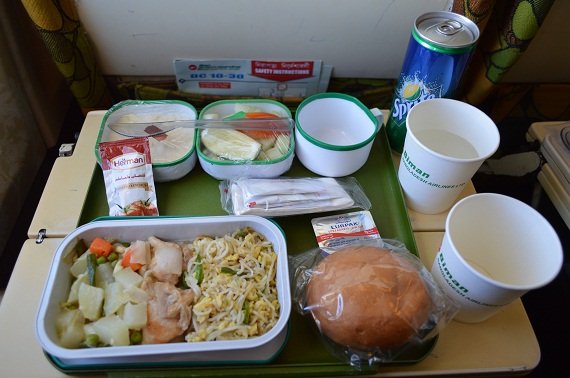
The crew on this flight to Dhaka via Chittagong was extremely friendly and open, they didn’t mind at all about taking pictures on this classic airliner. It is always a big pleasure to talk to flight crews who are also crazy about aviation. The fact that throughout Biman Airlines all of them are very experienced makes chatting even more fascinating, since there is always a nice story to be told. It is a funny fact that there is no preferred aircraft for them to fly on. Knowing not only the A310, but also the B777 and the DC-10, some prefer the Trijet over Boeing’s Twinbeast, others just love to work on the Airbus. But one thing the all have in common, they love their work and this can be felt with every move they make – it was such a pleasure to be on board!
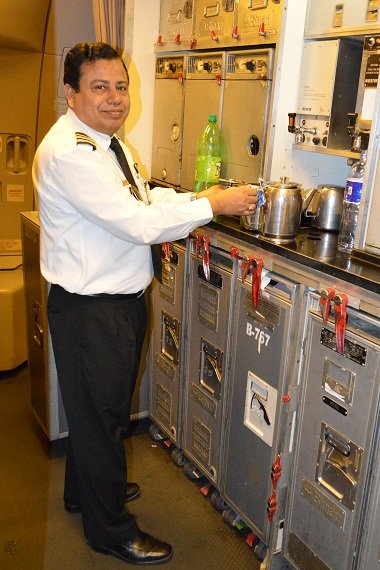
After 3 ½ hours the Airbus started it’s descend to Chittagong for its transit stop. Meanwhile it was daytime and the engine’s roar had vanished. The flight was very smooth and the approach to Chittagong was leading the Airbus across the coast lines, on which hundreds of ships were being dismantled. With elderly airframes there is one evident problem: the windows tend to be either dirty, crazed or fogged up. Mostly it is an abhorrent combination of all three factors one has to deal with. In the case of Bimans A310, things could be handled, if the sun would have been in a better angle.
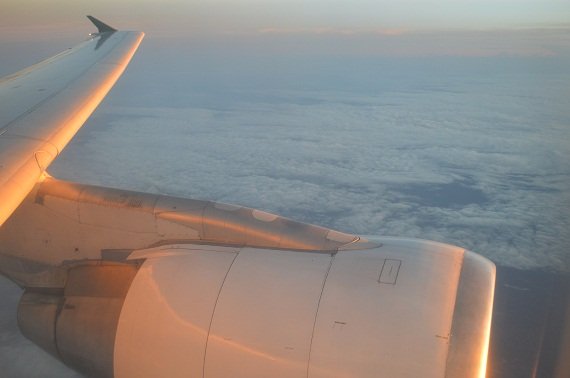
The cabin of this Biman A310 comes in the classic flower design, with a certain Latin touch to it, due to the history of the aircraft. Interior markings are held in Spanish and in English, as well as in Bengal.
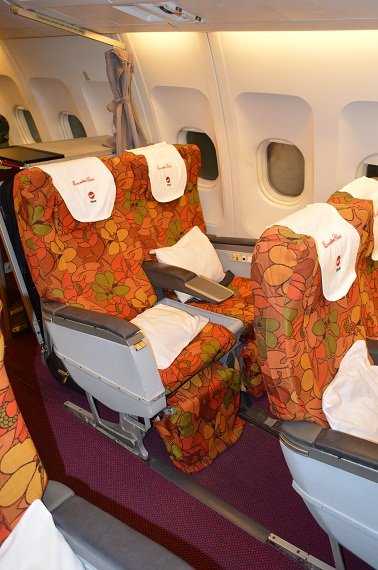
The landing in Chittagong was as smooth as it can be. The airport is partly used as a military field with An-32 and MiG-21 series stationed there. From inside the plane the facilities could be seen very well. Since this connection is carried out as a transit flight, during the one hour turnaround it is forbidden to go off the plane. What might sound boring is actually a great chance to watch the ground support teams do their work, be it the unloading of the baggage containers with the luggage for Chittagong, or the preparing of the cabin for the short hop to Dhaka. And an old grounded Fokker 27 adds a certain flair to the atmosphere.
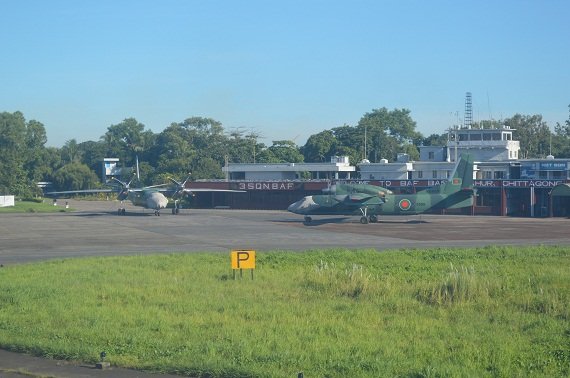
Travelers that have been booked for the domestic flight to Dhaka began boarding the plane about 30 minutes prior to departure. The process was, thanks to the watchful eye of the cabin crew, very smooth and took only a few minutes. After all had taken their seats, the Airbus was pushed back and was ready for takeoff for the 25 minute hop to Dhaka.
On this leg only a drink is served before takeoff, as the little flight time won't allow for more. Together with the safety demonstration, there is little to do for the crew. The landing in Dhaka again was a very pleasurable one, only that this time the scenery has changed dramatically. There is a military base located on the airport, but attention was drawn to what is standing around at the maintenance hangar of Biman Airlines. A cargo L1011 is accompanied by lots of DC-10s, of which two are still operational, the others have been grounded by the authorities and are now used for spare parts. In the middle there is the sole A310 with the greenish livery, already being broken up for spares. With all these mighty widebodies, it was truly hard to spot the meanwhile retired classic Fokker 28.
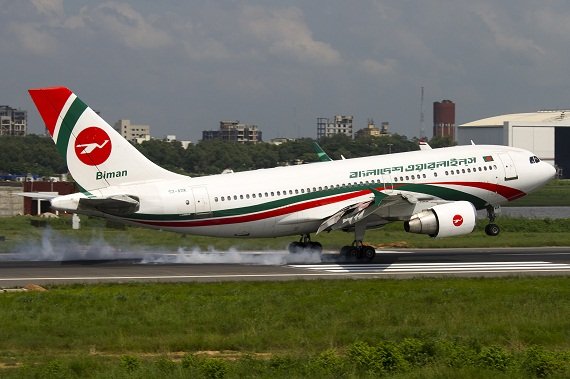
It is not only the maintenance area of Biman that will attract the attention of every spotter. Lots of different flying machines make Dhaka an attractive place to visit. Bangladesh United A310s can be seen as well as some of Regent Air’s fleet, including a new DHC-6 float plane. An AN-12 awaiting its next flight on the apron was another eye catcher. As time went by, the first Hajj flights started arriving, mostly Saudia aircraft of larger size.
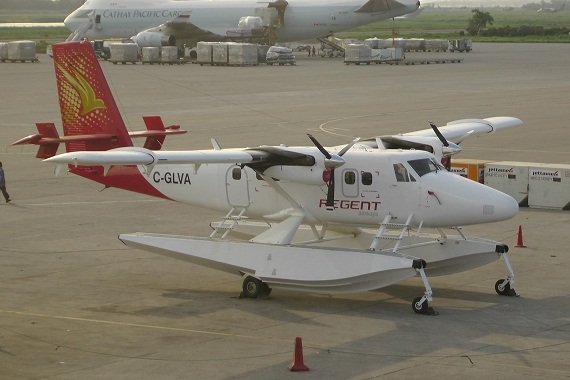
Once in a while there was interesting cargo activity going on, such as a British B747-8F or a classic Uzbek A300F. Some nice new A330F formed a shining contrast to the aged DC-10s. But no doubt, the good old Douglas Trijet was the shining beauty, elegant and epic at the same glance. And while the two last DC-10s were awaiting their next flight, nostalgic feelings came up. And suddenly one drifts away to the glory days of aviation, a time in which variety was common, and Twins, Tris and Quarts were plowing the skies, with smoke trails behind them...
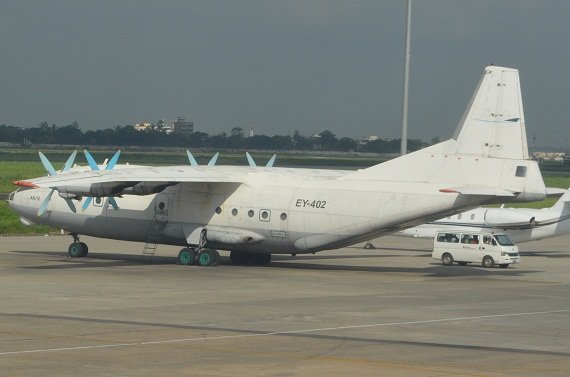
Dhaka – Hong Kong – Dhaka on board the DC-10 „New Era“ S2-ACR
It is a well-known fact within the community, that the DC-10’s passenger operations will soon be history. Therefore it is no wonder that one will meet enthusiasts from all over the world in Dhaka, trying to catch one of the two beauties for a last joyride. It has become increasingly difficult to catch one of the last two classic Trijets in regular service on one of its assigned routes. The new B777 can do the job way more efficient. The wet leased MIAT B767 is a valuable addition as well. For most spotters, the AUH – DAC route seemed the most logical choice for flying on the DC-10, with good Europe- UAE connections. But since the Hajj Season is in full progress, Biman is switching the airframes based on demand. As another route, Saudi Arabian destinations might be a good choice, but a visa for the Saudi Arabia is not that easy to get. If the budget is flexible, it is the best thing to spend a few days in DAC and go for a scheduled flight if one is operated with the D1C. Biman staff as well as the airlines customer service via hotline and internet is always there to help and assist, since it is not an uncommon thing anymore that there are travelers especially for the DC-10.
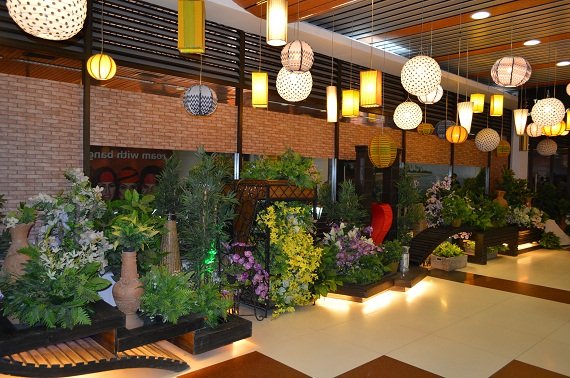
After checking the online flight status site of Biman Airlines it became clear that there was an aircraft change from the Douglas jet to the wet leased B767. So with the help of Biman’s very professional customer service, it was possible to cancel the first flight and get on the newly opened Hong Kong flight, which should have been a guaranteed DC-10.
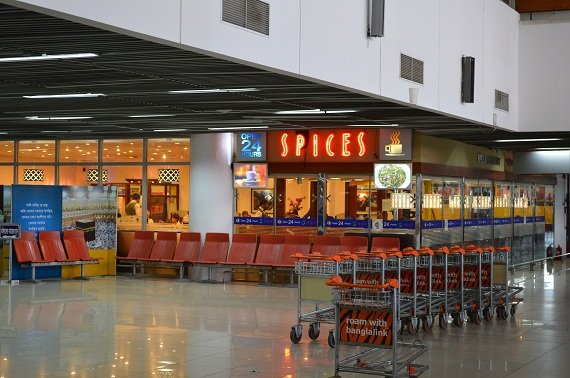
After arriving from DXB in the morning, it made sense to have a look at DAC airport and get orientated. Although being a small airport in comparison to for example DXB or LHR, there is everything that an international hub needs. One can't help but stumble upon the transfer desk. It is operated by Biman staff, but serves all the international transfer services, be it Malaysian, Emirates, Saudi or any others. For domestic transfer, passing the migration is required. Bangladesh offers a Visa- Upon- Arrival option for many foreign countries. It makes sense though to check for availability / allowance in advance. The migration is no problem at all. After registering and paying the fee of 51 US$, one is able to enter the Democratic People’s Republic of Bangladesh. Only Dollars are accepted for visa payment, local money won't be accepted. For easing up the process, it’s best to bring the exact 51 Dollars, otherwise the change will be given in local Taka, and this can take a few minutes.
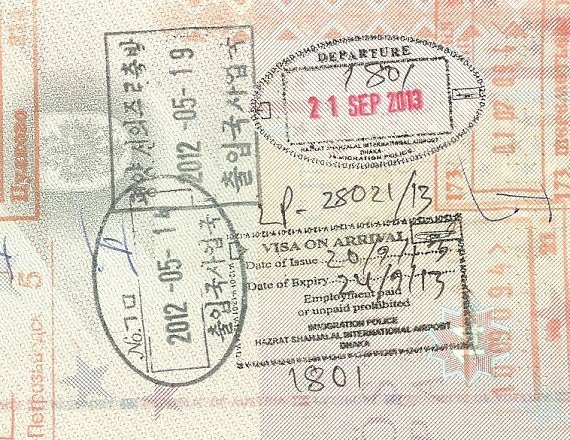
If flying on a connection service, and the transfer time is less than 12 hours, one will not be granted access to the country, but rather has to stay within the international area of Dhaka airport. There are a lot of services available, such as a cafe, duty free stores, a great restaurant, praying rooms and more than enough sanitary facilities. The airport is very well maintained and kept very clean and tidy.
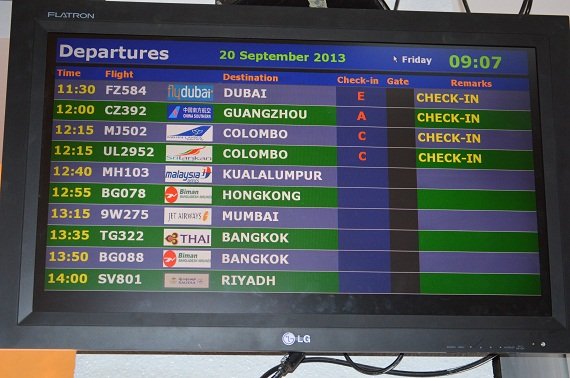
At the transfer desk, depending on the incoming flights, there is more or less of a queue. Depending on the urgency of your flight, the staff will tell you when to approach them in order to get you checked in for the next flight. This is a very professional approach, since it makes sense to serve those guests first, which have the shortest connections. If one needs to wait, the time can be spent shopping or in the restaurant. When re-approaching the desk at your assigned time, help is offered immediately. English is perfectly well spoken among all Biman staff, be it in the air or at the airports in Bangladesh. Generally the command of English throughout Dhaka is good, and the friendly Bangladeshis always offer their help.
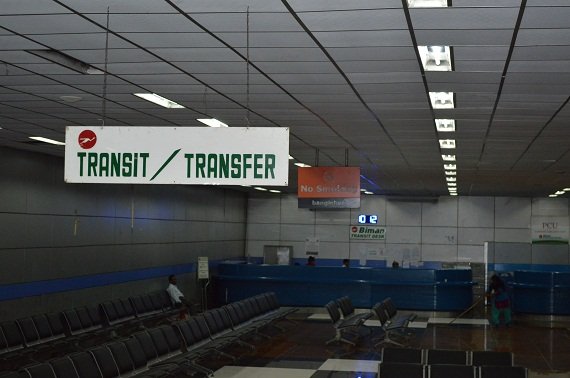
If there is some waiting time, Dhaka would be a great airport for spotting, with all those windows allowing great view from the terminal building to the apron. But most of them are covered with a darkening foil or made blurry, so that it is impossible to look through them. Only a few are transparent, with even less being adequate for taking pictures. It is a pity, but the all of the windows are dirty on both sides. The terminal is a straight building, with air bridges at one side. On the other side there is the main entrance, the car ramp and the check- in area inside. At one of the ends of the building the gate 1/1A is located, on the opposite side there are merely windows, with a bit of darkening foil on them. This very side allows for great shots of the Biman maintenance hangar as well as for parts of the apron (open positions). Cargo aircraft positions and the freight terminal are located as well on this side of the airport.
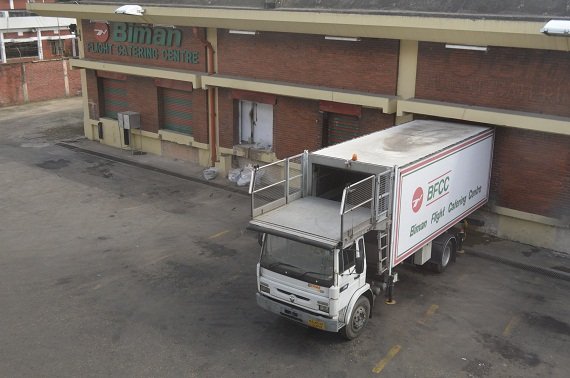
It was the parking position in front of the hangar where the DC-10 for the flight to Hong Kong was parked at. Only connected to a GPU, parked under the shining sun it was resting. Well behind the parked DC-10, Dhakas graveyard has some interesting, rare flying machines parked. The destiny of those frames is clear: they will be reborn as cans or maybe as other aircraft, but none of them will take to the skies any more for sure. The rest of the not airworthy DC-10 fleet is parked alongside a soon to be completely broken up A310. The parked DC-10s are used for spares, some of them were withdrawn, and others were grounded by the authority. It seems that, even though Biman Airlines is a state airline, the authorities won't make any compromises. The out of service Fokker 28 Jets were hardly recognizable in between all those widebodies. A L1011 seemed to rot on the apron - an uncommon sight since it is a Tristar- freighter.
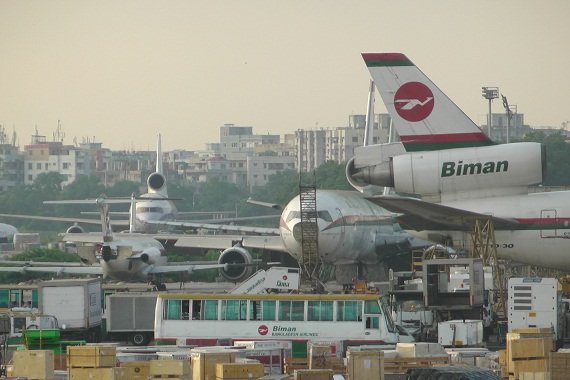
As boarding came close, the DC-10 has been prepared for the flight. There wouldn’t be too many passengers on board this flight, less than 30. It is the cargo that was making up for the costs of the trip. With 314 seats in an all economy configuration, the DC-10 will surely feel empty. Some other airlines were coming and going, Hajj Flights were departing, and in between all those B777s and B747 the DC-10 was finally pulled to the parking position at gate 6. Luckily the beauty could be seen quite well while being towed.
There was gate staff well in advance of the flight present, although entering the area was not allowed until Biman staff has authorized boarding. Meanwhile the DC-10 has been taken care of. Since the APU was inoperable, an air starter combi unit was connected to the widebody. It did not only start one of the DC-10’s CF6 turbofans before pushback, but also cooled the passenger cabin. It's actually a very common thing that airliners operate with an unserviceable auxiliary power unit and nothing out of the ordinary. Other than that, the lower deck of the airliner was filled up with AKE containers and cargo pallets. A solo catering truck loaded trolleys and boxes to the very rear and front galley. The DC-10 has an additional, very spacious middle galley as well, but with a hand full of passengers on a rather short 3 ½ hour flight, the middle kitchen stayed rather empty. There were loads of military personnel around the aircraft, these were security officials carrying weapons. They operate on the apron as well as within and around the terminal building. Some of them carry rifles, others pistols. All of them seem to be of young age with a perfectly spoken English language and extremely friendly means of behavior.
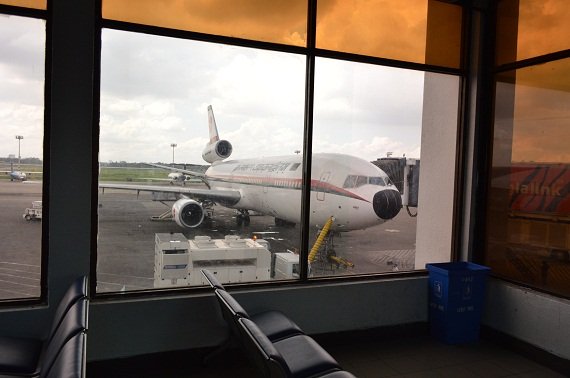
After some other Biman flights’ leaving to Bangkok (B737) and Delhi (A310) it was the DC-10’s turn. The air starter unit was running, cargo doors have been closed and the boarding started. Within the gate area, some nice shots can be made, if there are no reflections and the darkening foil is already a bit bleached. There was not too much time for taking pictures, since boarding would commence soon. From the outside, the biggest window of the cockpit, on the right side of the plane, seemed to be scratched or broken. Even zooming in on the window won't allow a conclusion of why it looks this way. Only a visit to the flight deck would reveal that this is the rear side of the flight engineers instrument panel, which completely blocks this window. If the sun is shining onto the metal backside, there will be a shimmery reflection of it onto the window, creating an illusion of cracks.
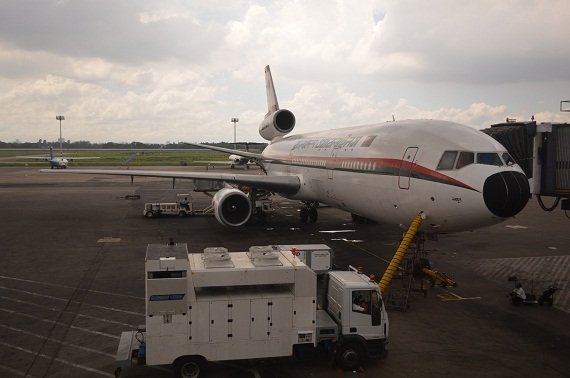
Even though the Douglas Trijet is nowadays considered an aged airframe, it is S2-ACR that marked the very end of production of the DC-10, being delivered to Biman Bangladesh as one of the last two DC-10s being manufactured. She was the 445th DC-10 to leave Long Beach, out of 446 frames, arriving in Bangladesh in late December 1988. All other Biman DC-10s were operated by other airlines before, mostly Singapore. Some aspects of the interior of the birds still reflect the previous ownerships, and once in a while a Singapore Airlines logo can be spotted. The two still operational DC-10s (CR and CP) seem to be kept in good flying condition, as far as one can judge by looking at the planes from a passengers point of view. There is the saying that in aviation there are no old planes, only the ones being maintained properly and the others that aren't. In case of Biman, if the DC-10s are technically taken care of the same way as they are tidy and clean, they could fly another decade!
The galley as well as the cabin and the lavatories were spotlessly clean, not only on the magnificent Douglas, but also on the A310 nothing could be found. While the plane tends to become dirty during flight, the crew has cleaning equipment on board, allowing them to even get rid of larger scale “contamination” during flight. With all this tidiness there is one thing that can be complained about: the windows. Unfortunately those are not cleaned after every leg, resulting in a fatty, smeared view. But as an experienced spotter, one will have cleaning equipment always at hand. When the cabin crew will see you cleaning the windows, they will offer you to clean it for you.
After some 6 exciting hours of transiting through Dhaka Shahjalal International Airport it was time to board the DC-10. Some airliners have a distinctive smell to them, best examples are Russian birds. In the case of the DC-10, there was no smell at all. Boarding via the jetty (air bridge) was more comfortable than walking to the plane after a bus ride would be. Sometimes though also widebodies will be operated from open positions with along going bus boarding. The warm welcome of the crew unfortunately wasn't be noticed at all, since ahead was one of the most classic airliner cabins still in operation. The interior design is the same as in the A310, but it is just way cooler to see all this in DC-10. Routinely the purser started funneling the passengers, only that after realizing that only 27 will come, he started to relax. Imagining that 314 travelers would board the all economy class 2-5-2 cabin, his awareness can be understood. It took only a few seconds and everybody was seated. As already said, Biman is used to spotters from all over the world coming to Dhaka for this ride. Out of politeness one should have a short chat with the crew before taking pictures. And if you are lucky, they will invite you to take as many pictures as you wish, as long as you don't bother other passengers. No matter what aviation joyrides you might have been through already, the words “the plane is all yours, feel free” the Biman crew may open a new level of flying adventure. When aviation enthusiasm meets an open crew proud of their company, the experience becomes and unforgettable adventure.
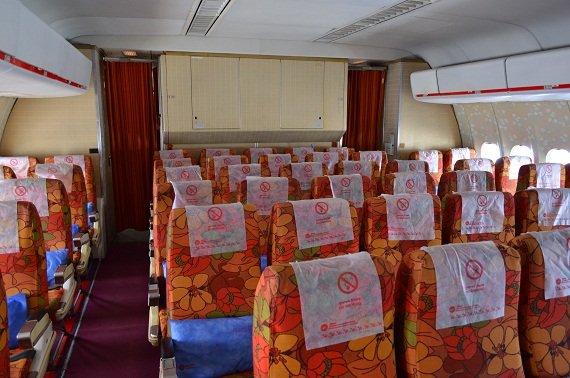
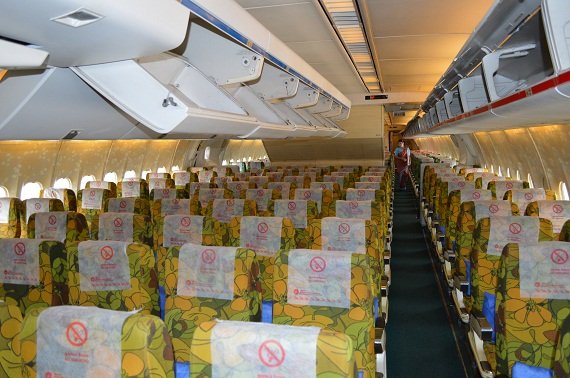
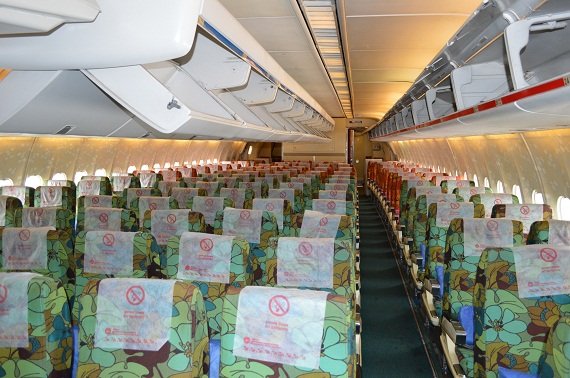
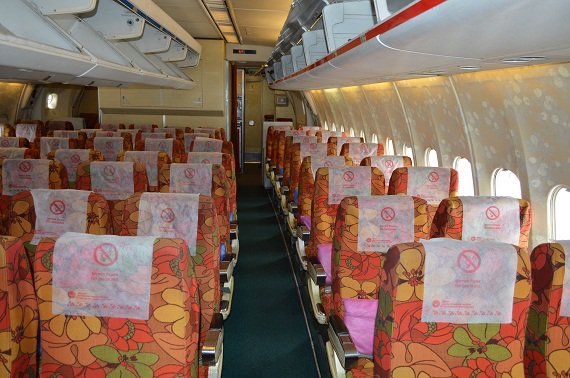
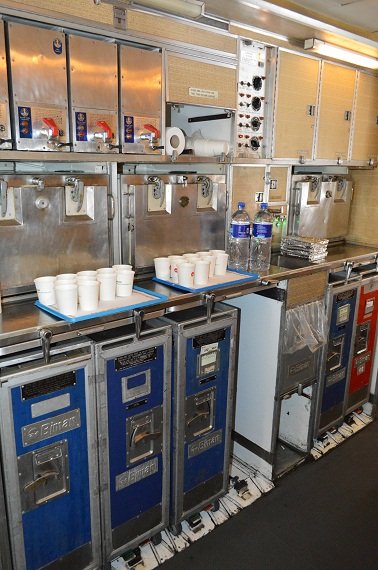
After starting the number 2 engine while still standing at the gate position, the pushback truck has been connected to the aircraft, and the airstarter unit was removed. The short flickering of the cabin lighting indicated that the DC-10 now was under its own electrical supply and the ground power has been removed. Pushback began and the startup of the remaining engines followed. Even though the DC-10 is a massive bird the taxi is a bit bumpy, and there is a certain rattling sound to the cabin. Overhead bins moved and creaked, the hydraulic system added it's bit to the texture. There is no such thing on modern planes. It can be compared best to the sound a cabin interior of a Tu-154 makes during taxi.
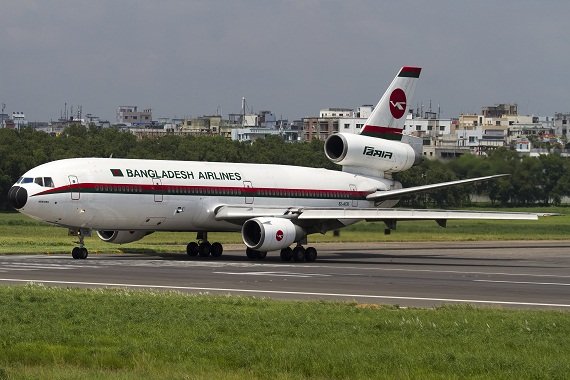
While taking off in a Tupolev, there is a certain impression that the plane is falling apart, which is the complete opposite of the DC-10’s takeoff sound. The Douglas Trijet was smooth and the cabin was silent. So after all, this might have only been the taxiways fault.
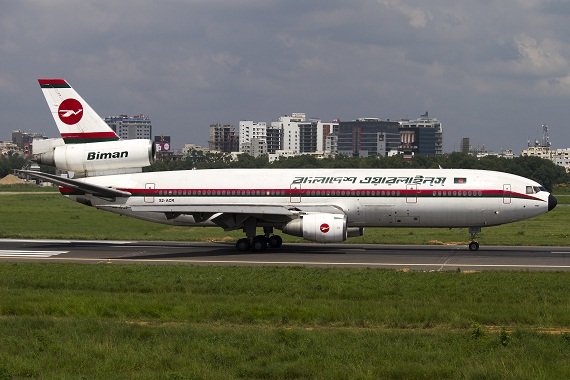
The short rainfall an hour before takeoff luckily left no drops on the window, so for filming and taking pictures this was perfect. The DC-10 held a few seconds at the threshold, then lined up. The adrenaline was rising, the takeoff of one of the last commercial DC-10 flights was coming soon, the General Electric could be seen completely through the window. They were running on idle for another 3 minutes after lining up. The crew made the last checks, followed by the cockpit announcement, and finally the DC-10 started spooling up its engines.
With a lot of cargo in the lower deck and an empty passenger cabin, this run was a piece of cake for the Trijet. Douglas' aircraft are well known for their steep climbing angle, and after rotation this flight was no exception. The howling CF6 engines became more silent as soon as the liner picked up some speed. Slats and flaps were retracted and the plane was soon configured for cruising. The noise level was comparable to modern day aircraft, with the center (no.2) engine not noticeable at all, though being close to the cabin. It was only during landing that in some cases a howl once in a while can be recognized.
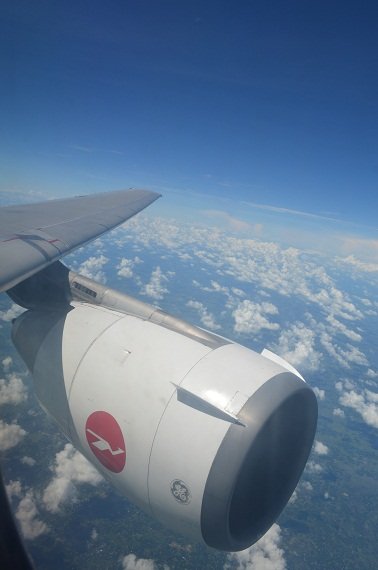
The flight to Hong Kong offered lots of possibilities to move around freely on the airliner. If you have an identification that confirms that you are working within the aviation industry, such as a pilot or cabin crew, you might get lucky and the captain will allow a short visit to the flight deck. The cockpits appearance was far from old. To the right hand side the flight engineer sat in front of his panel, monitoring all relevant flight data. It was very informative to have a chat with him. He had all the info on fuel burn, but also speeds and other specifics. The DC-10 is usually flown by the autopilot, corrections and other maneuvers during cruise are as well handled through panel settings. Only until final descend the pilots took the DC-10’s stick back into their hands.
All crews flying the Douglas for Biman are very experienced. Most of them have a long flying record on other Bangladeshi aircraft such as the Fokker 28 or the A310. With the withdrawal of the DC-10, flight engineers will become obsolete. On the flight to Hong Kong, the engineer was looking forward to a relaxing future in retirement. Sitting behind the stick means less risk for unemployment, with all the experience and other type ratings in hands, there is a lot to do for the last Douglas crews at Biman, probably all of them will change to the B777 or will end their career for retirement.
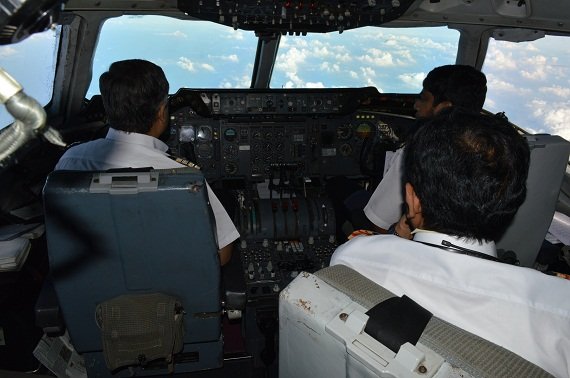
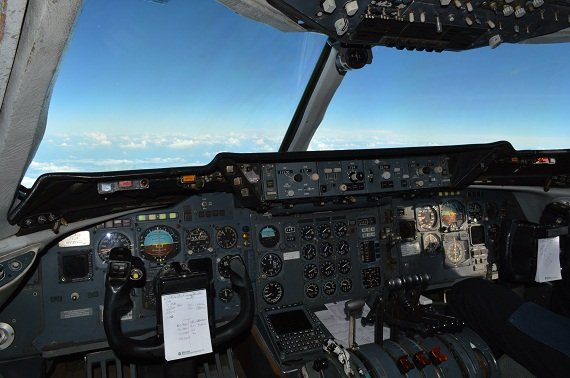
Classic airliners such as the DC-10 are known for their high cruising speed. It was developed in a time the 747SP was cruising at Mach 0.9 and a classic Tu-154B could reach up to Mach 0.92 (and let's not forget Concorde). No wonder other airliners in the vicinity of flight BG78 were no match. A cargo MD-11 and an Emirates B777 were left behind quite easily. The DC-10’s cockpit windows are quite big, way bigger than on Douglas' classic DC-9 narrowbody. With the flight engineers panel covering the complete right large window, the copilot still has a great view with the remaining ones. On the opposite side the jump seat is located, with the big window to the left, offering a great view over the shoulders of the captain. Watching such an experienced crew work in a classic flight deck was a great pleasure. The cabin crew visited the flight deck once in a while and offered drinks, food and fresh fruit to the pilots and the flight engineer. Sometimes they stayed a bit for a chat, since the 27 passengers were not the biggest challenge to them. It is this family feeling that makes flying Biman something special.
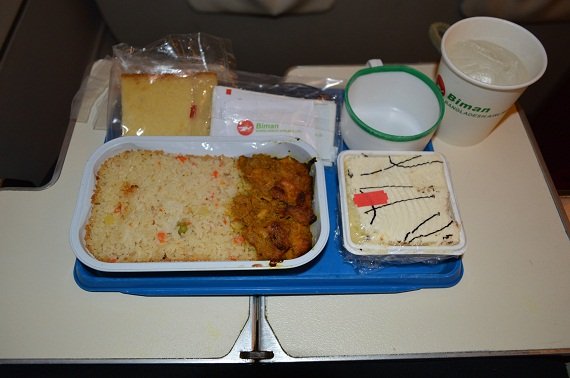
There are two choices of hot meals on Biman’s longer flights, which are prepared under Islamic law. Mutton and chicken are common choices, accompanied with rice and vegetables. Salad, dessert and a piece of bread are not missing. The meals cover Bangladeshi, Asian and Western preferences alike, one choice is spicy, the other one not. By describing food as “spicy” Bangladeshis actually mean something that is not comparable to spice levels in western cuisine and can be summed up with one word: pain. In the case of the spicy mutton, the airlines catering chefs seemed to have considered that foreigners might be on board, but still a fire extinguisher as an alternative dessert would be worthwhile thinking of. Other than that, all the meals are plenty and include bread rolls, butter, crackers, a hot meal in an aluminum dish, salad and a dessert. It’s worthwhile mentioning that on all Biman flights on this trip, the dinners differed a bit. Be it the salad, the dessert or the hot meal. The drinks offered are the same on all flights and correspond with the Dubai – Dhaka flight on the A310.
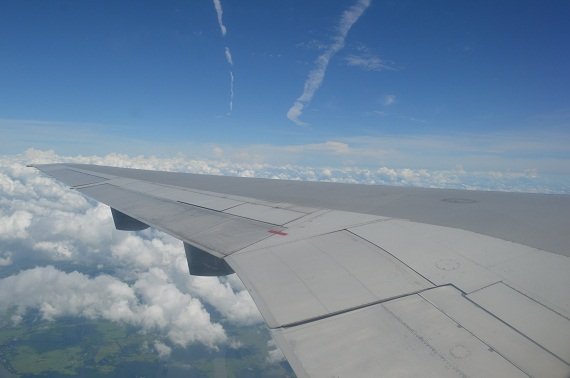
On such a nice ride, the 3 ½ hours seemed to fly by rather quickly. The possibility of moving around freely keeps every enthusiast busy. And in no time the plane was already descending to Hong Kong. It's a shame that Kai Tak is closed already, when looking down to the artificial island, out of the windows of a DC-10, suddenly the good old times came back to mind. The airliner was so light that the flaps haven't even been set to its full position. Out of all widebodies the fully deployed lifting devices on a DC-10 are the ones with the greatest character to them, huge in size and nearly vertically pointing downwards. BG78 was flaring a while until the bird gently touched Chinese ground.
Hong Kong Airport is full of large airliners, and again the DC-10 is something special. After some taxiing, the plane reached its parking position equipped with a jetty. Since the DC-10’s APU was unserviceable, the planes doors need to be kept closed, until independent round power supply was established and the center engine has been switched off. With the center engine placed on top of the fuselage, one might think that there is no potential harm to ground staff and equipment whatsoever. Hong Kong regulations do not differentiate between airliners, and while in Bangladesh the plane can be boarded and deboarded with the center engine running, this is strictly prohibited in China. After waiting some 10 minutes until a ground power unit was available, the doors were opened. In Hong Kong the DC-10 was docked to both exits. The passengers were off the plane in no time, all through the front door. Overall the airport in Hong Kong seemed to be a bit out of exercise in serving this Trijet. Biman has only recently taken up flights to HKG after a long time, and only slowly demand for this connection is developing.
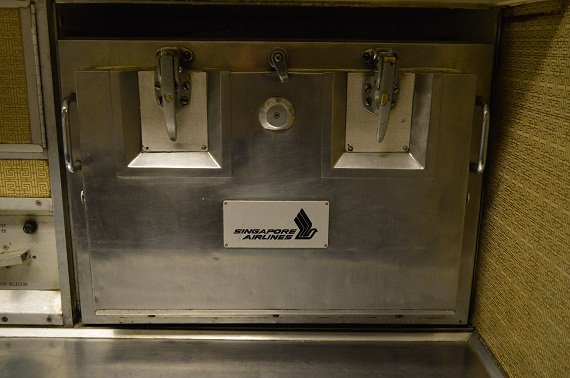
The DC-10's early arrival was totally consumed by the dead time waiting for opening the doors. Being booked on the same flight back, a transit desk would issue the boarding pass for the same return flight back “home” to Dhaka. The turnaround is very optimistic for a fully booked widebody, with only 1 hour and 25 minutes of ground time. With the increasing number of on time flights of Biman airlines, and due to the lack of aircraft, short turning times become a major factor for professional operations.
In Hong Kong the station manager welcomed the passengers leaving the plane, the ones for the return flight were already waiting. After picking up the boarding card from the transfer counter (takes some 20 minutes including walking), the gate area in Hong Kong is an interesting place to have a look around. The picture of the travelers on the return flight to Dhaka is a completely different one. Many of those flying are business men, most of them do so frequently. Some of them are on board with a free ticket as a reward. They were seated in the front of the cabin. Some had a welcome drink in their hands. The Biman station manager in Hong Kong was chatting with the crew and looking for the last passengers. If necessary they will personally search for them in the terminal. With a friendly Bangladeshi smile they will convince you that they are able to find a single one of their fellow citizens, in the terminal full of passengers, in no time. It seemed that the station managers keep a very high level of customer service, even organizing calls home for those whose phones don't work in Hong Kong, offering their personal cell phones rather than the company ones. This commitment was again breathtaking to say the least.
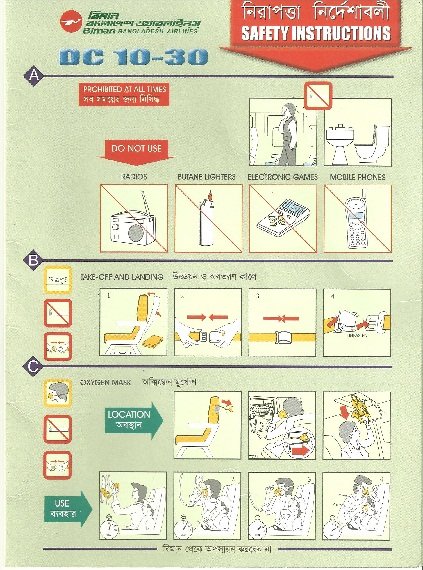
The startup procedure was the same as in Dhaka, airstarting one engine on the position and the others while pushing back. Meanwhile it was dark, and most of the passengers are already sleeping. In the DC-10’s cabin the great smell of the spicy mutton has been displaced by the odor of burnt jet fuel. After some time the planes air conditioning filled the plane with fresh air and everything is just plain routine. Most of the frequent travelers would not make a difference between the DC-10 and other planes, only that to them the Douglas is old and the Boeing is new, with much greater comfort. It is a general fact that the flying public can't distinguish a B737 from an A380, and that the general perception of a flight is much more influenced by cabin design and crew performance.
As stated above, if one can provide proper a proper ID, one might actually be invited to take a closer look at the DC-10’s operation. To be invited to the flight deck during a night time take off from Hong Kong was something extraordinary and a once- in- a- lifetime chance. Even for the most experienced spotters a jump seat on this very plane with this very airline is more than heaven on earth.
After holding short of the runway, the DC-10 began lining up for departure. The aircraft was already configured for takeoff. This leg would be an easy one as well, with a bit more cargo in the holds and virtually the same amount of passengers. The takeoff clearance was given and the cockpit crew pushed the throttles forward. The sound impression of the spooling up engines in the cockpit was less of a roar, but far more dulled compared to a window seat right at the CF6s. The impression might have been intriguing, but the sound of the engine was way clearer, more silent on the flight deck, allowing distinctive and accurate judgment of the engines performance.
The breaks were released and the DC-10 picked up speed. Although widebodies tend to be a bit easy on takeoff, this one is a beast. The acceleration is comparable to an half- empty A319 or MD87. With the cockpit being at a faraway point of the main gear as well as of the center of gravity, the vibrations seemed to be greater there. This was adding a rattling sound to the takeoff run. With increasing speed and rising lift on the wings, the vibrations became less and at V1, the speed sensation was overwhelming. The crew was communicating the decision marks: V1 – continuing – rotation – lift off. The DC-10 was airborne, smooth she started her climb. The action on the rudder, to increase the angle of attack on the wings for better lift, led to certain, aerodynamically related vibrations. This is normal on all airliners. Soon the trijet was smoothly leaving Hong Kong behind. The night skies above this amazing city are at least as astonishing as the view of the town from above during daytime. There seems to be air traffic everywhere. The radio frequency is correspondingly busy.
Step by step the air traffic controllers handed Biman 79 over to the ones monitoring higher air traffic space. The flight management system, which was in advance filled with the route coordinates, now guided the DC-10 through the dark. The autopilot took over flying. In the case of this Douglas classic, the autopilot still works in an old fashioned way, with handy big and stable levers, switches, keys and analog indexes. All of them gave their distinctive click while being set. Yes, the DC-10 is a classic, and these sounds were a memory of how flying once not only felt like, but how the sound of the pilots office used to be for decades. To every input the widebody reacted immediately, smoothly and accurate. Guiding this beauty through the skies seemed to be so easy. The experienced crew added to this impression. The cockpit is actually quite spacious, even with a crew of three and an occupied jump seat.
During cruise, food was served again. The two meal choices included the same hot meals, mutton and chicken. The side dishes as well as the dessert varied again. With a cabin far away from full, the crew offered, to those who wish, a second hot meal. One couldn't help but feel as though one would be at home, relaxing. There were no inflight movies or anything comparable shown during flight. There is a video system on board, but whether it is being used on longer trips is unclear. There was no inflight magazine, but newspapers were offered. In any case for an enthusiast the flight won't be boring, and “normal” passengers all made use of the free 5 abreast center row, laying down for a nap.
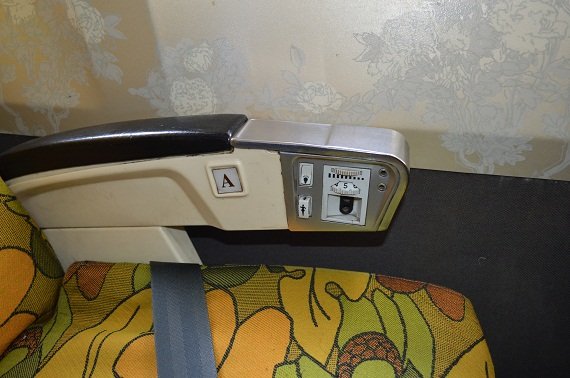
After a quiet and relaxing flight, the DC-10 started descending to Dhaka. The flight deck was now lit again for landing. All the analog instruments created a wonderful atmosphere. The instruments were set for ILS approach and the DC-10 was closing in on the approach radial as well as on the glide slope. Dhaka was shining bright during night, especially since clouds blocked the moonlight once in a while. The CF-6 engines have become completely silent. Speed was decreasing steadily, altitude was dropping and the plane was step by step brought to its landing configuration. The crew started communicating again, the captain was at the controls, the first officer assisted with the instruments, and the flight engineer monitored the DC-10’s path. As the speed dropped to the set minimum, the auto throttle spooled up the engines again. The DC-10 banked left, the VOR showed the planes center line on course for the runway now straight ahead and brightly lit. The radio altimeter began reading out the height above ground as well as the minimums. Biman 79 reached decision height – “landing”. The radio altimeter communicated the altitude as the DC-10 got closer to the ground. The runway was close already, the view spectacular, and the crew highly concentrated. 50 – 40 – 30 – 20 – 10 and with a wonderful flair the DC-10’s main landing gear smoothly touched down on Bangladeshi soil.
Biman 79 was home again. The thrust reversers were deployed and the DC-10’s speed was slowly decreasing until 2/3 of the runway have been used up. Due to the layout of the landing strip and the taxiways, the DC-10 needed to backtrack a bit, including a complete 180° turn. After a few meters the airliner reached the exit for the taxiway. Meanwhile it has become so dark (and the lighting is not the best either) that the exit could hardly be seen. The DC-10’s windshield was fogging up a bit, it was hot and humid in Dhaka. There was a bit of a traffic jam at the airport, with no gate stands free for the DC-10. It was assigned to an open position, with the marshaller guiding the plane to its final position. Gangways were placed alongside “New Era” and the doors opened. The center engine was kept running for a few more minutes, until the ground power unit was connected. The crew switched off the plane, and this extraordinary adventure was over.
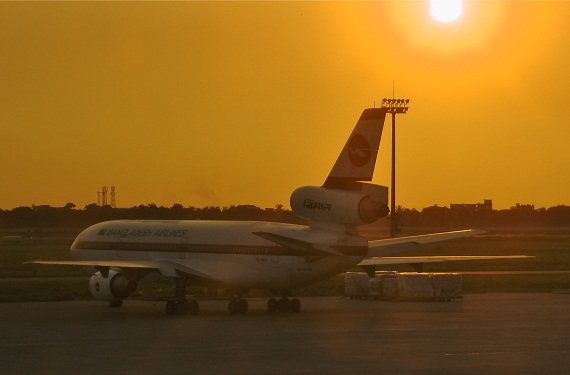
The DC-10 is an eye catcher, parked on the apron, with artificial lights shining on its beautiful shape. The bus was bringing the passengers to the terminal building. One last glance back and flight BG79 was finally over.
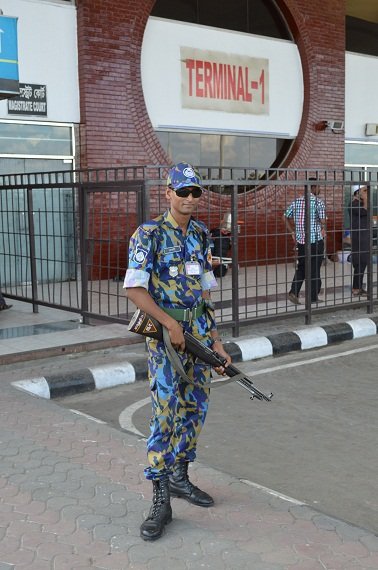
Stopover in Dhaka
If you fly via Bangladesh, one should really take some time to have at least a few hours walk through the capital Dhaka. After arriving, luggage was handed out quite soon at Dhaka Shahjalal International Airport. As a next step, one has to organize the migration, if necessary. Some nationalities may enter Bangladesh without visa, others may apply for a visa upon arrival, and some need to apply for a visa in advance. It makes sense to check not only official web pages, but also travel forums, since these tend to be better updated.
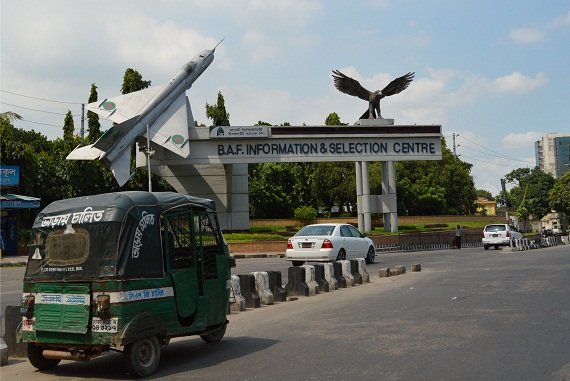
A visa upon arrival needs to be registered with the local airport police. They will write down the number in an official book and hand over a bill with the fees to the applicant. These are usually 51 US Dollars and need to be paid in cash at a small bank desk. Local and other currencies are not accepted. After confirming the payment, the police officer will stamp (3x5 cm) the visa into the passport and one can commence to the migration desks, marking the border. Passing the border takes one minute, since a picture is taken. Other than that, after 25 minutes one has entered Bangladesh.
The airport is located to the north of the city, with hotels usually located about 5 km away from it. There are international 4 and 5 star brands in Dhaka, as well as local offers. Most of them can be booked via internet. A 3 star Bangladeshi hotel can be found from 25€ per night. The final price will be about 25% higher, since there will be some surcharges and taxes. Any price agreed upon in advance in Bangladesh seems to end up a bid higher in the end. But one gets used to this quite soon, and usually a Euro and a Dollar can buy very much in this country, so it doesn't matter that much.
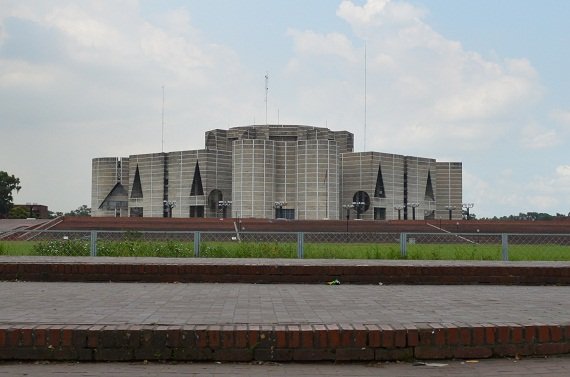
If one is used to traveling in Europe or the USA, Dhaka is a completely different planet. The streets are full of people, there are rickshaws, motor rickshaws, cars, buses, taxis, motorcycles, bicycles and other means of transportation everywhere. And they all have one thing in common: the honk their horns. This can be taken literally, they honk their horns about 25 times per minute, 24 hours a day, 7 days a week. It seems that even parked vehicles honk. And the greater the traffic jam, the less the masses are moving, the greater the honking frequency. Out of the few trillion honks one will hear during one hour in Dhaka, not a single one has an effect on the traffic situation. Dhaka is probably the only place in the world in which signal- horns need to be repaired or replaced due to excessive use. This is the most distinctive impression one will get of Dhaka. The moving masses are incredible, the sound, the smell, the atmosphere and the speed is just amazing. Taking public transport means to use buses. This is impossible for foreigners if you don't know the language and the local habits. Getting around with rickshaws and taxis is quick and easy and won't cost too much time. But 5 km can take an hour in Dhaka, so when going back to the airport, it makes sense to calculate a lot of spare time.
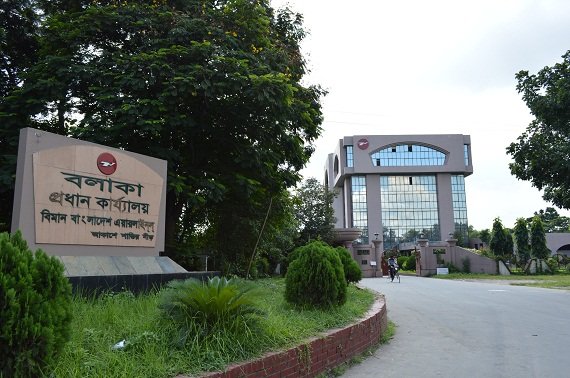
Around the airport there are plenty of spotting possibilities, you can also ask locals if they will let you spot from their property (i.e. roofs). Bangladeshis are very friendly and always help, no matter what. One should be careful if police or army staff is around, since Dhaka is also a military airfield. But other than that, there are no difficulties. Actually only a day’s stay in Dhaka would fill lots of pages, there are so many impressions and feelings, but in this case, focus is on Biman Airlines.
Dhaka – Abu Dhabi with MIAT Mongolian Airlines B767 JU-1011
With the increasing demand during Hajj Season, Biman wet leases additional capacity. A year ago this has been a Blue Panorama B767. This year’s addition is a Rolls Royce powered MIAT B767-300. The nice side effect of these wet leases is the somewhat exotic feeling being on a Mongolian Boeing with Mongolian crew and a full plane of Bangladeshis going to the Emirates for another working shift.
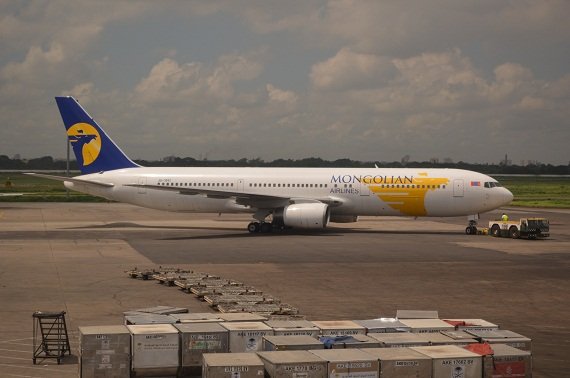
If one arrives by taxi at the airport, in some cases it will take you directly via the ramp to the departure level on the first floor. Sometimes the taxis will stop on basement (arrival) level, where they try to pick up incoming passengers. In any case the departure area will be crowded, during September there will be additional Hajj groups, dressed in all white robes, waiting in front of the terminal building. To every check-in area there are separate entrances, although moving within the airport poses no problem at all. If visitors wish to enter the building, they need to pay a fee. With this rule, the crowd is kept outside. After entering, the luggage is screened and one has to clear through a metal detector. There is another barrier, which says that it may only be crossed if holding a valid air ticket. Behind it the check-in counters are located. Knowing how well traffic rules work on Bangladeshi roads one will not understand that everybody is keeping up to these measurements without any compromise.
After the experience with the Dubai – Dhaka flight and the many people having checked in early, this time the goal is to be one of the first. The time leading up to the departure time can be used for a short walk around on the airport, as well as to explore the terminal building. The architecture is the same throughout the airport, be it in the transit area or in the check-in hall. Besides being obviously a very functional, building, there are also certain, nice design elements (such as mosaics) throughout the complex. Inside there are small shops selling books, souvenirs and snacks. On one side of the terminal the Biman Airlines ticket counter is located. On the other side the Emirates check-in area is designated.
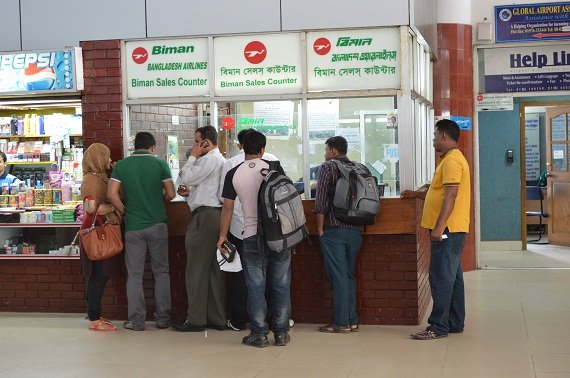
Passing through the border control again didn't pose any difficulties. The visa was closed, the boarding pass also received a stamp and that's it. The gates are all accessible within a 5 minute walk, but duty free shops offer a nice detour. Goods sold there include liquor, perfume and Bangladeshi textile fabrics.
Long lines of Hajj travelers filled up corridors connecting the gates. But all queued in line, the order and degree of organization was fascinating. This flight to Abu Dhabi was virtually full again. The usually operating DC-10 was used on different routes as well as on Hajj services. The B767 marks a decrease in capacity compared to the 314 seats of the DC-10, but with a business class added. Long before the scheduled time of departure the gate area was filled with people, but outbound Bangladesh no duty free bags could be spotted. The faces of most of the passengers tell a different story now compared to the flight from Dubai to Dhaka.
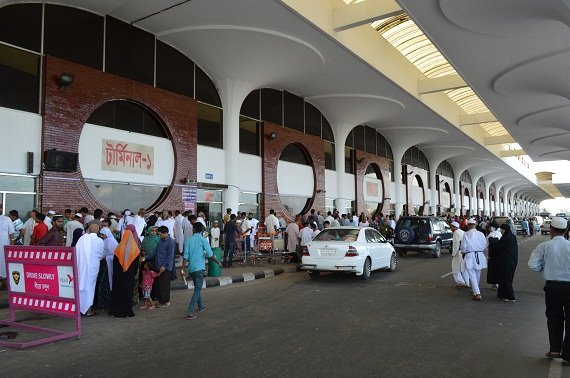
Boarding began and the masses started moving again. The Mongolian crew was trying its best to organize the boarding process. They ran around with several boarding passes in their hands, seating and reseating travelers. The boarding took longer this time. In the business class, a Biman A310 crew took their seats, they would fly another leg from Abu Dhabi with their Airbus. On this leg there were more business class passengers than inbound Bangladesh.
The doors closed and the B767 begins with its pushback. This plane is in great condition as well, and a RR powered 767 is not so common either. The taxi was smoother than on the DC-10 and the engines' sound was less noticeable. This version of the Boeing twinjet has three exits to a side. With only a few business class seats there is a small economy section in front of the number 2 exit as well. Other B767 may have only two exits to one side, plus four over wing emergency exits.
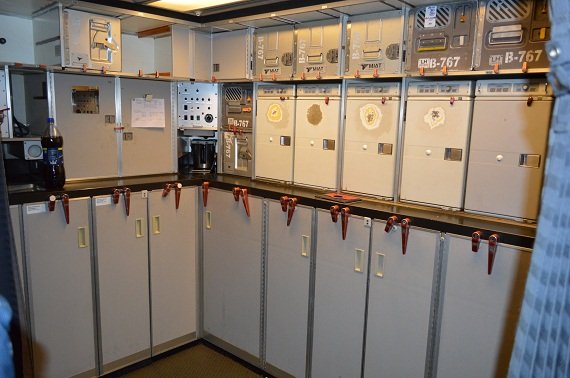
Since the departure took place during night time, one could enjoy the lights of Dhaka. The Rolls Royce started screaming as they spool up to takeoff thrust. The breaks were released and off she blasts, lifting off after a rather short takeoff run. The climb rate is less spectacular than on the DC-10. All in all it is a completely normal B767 flight.
Besides the Biman dead head crew in business class, the only reminder that this is a BG flight is the safety card in the seat pockets and the meals. Mutton or Chicken is the choice again, but this time the side dish on the hot meal even varies. There are two sets of safety cards on board, an original MIAT print and another reprint in Biman Bangladesh Airlines colors, which is the same layout and drawings, but in greenish reddish colors and without any logo. During the trip the flying route is displayed on the Boeings screens in the cabin. The flight is so smooth that half of the passengers fell asleep.
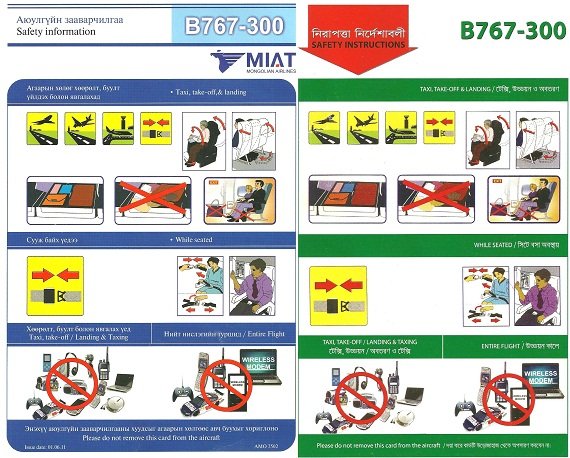
Descending into Abu Dhabi was not even noticeable. The speed breaks were deployed but didn't cause any vibrations. Finally the landing lights shun onto the engine, and the city showed up on the horizon. The Rolls Royce engines became nearly silent, as the B767 smoothly touched down in Abu Dhabi, only to start screaming again as the reversers have been deployed.
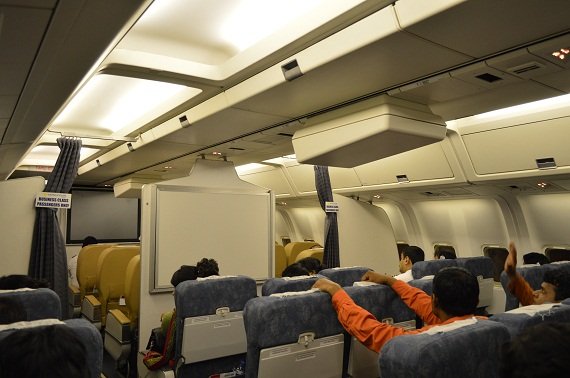
Biman uses Terminal 2 in Abu Dhabi, which is not the best for connecting flights, as most of the traffic in AUH takes place in T1 and T3. The dead head crew and business class passengers disembarked via the front stairs, other travelers left the plane via the second door for the bus, since the plane was parked on the apron. And suddenly it became clear that one of the biggest adventures still available in civil aviation was over. It will take some time to understand all the impressions such a trip leaves behind.
The DC-10 will soon be gone, new planes will come and go, and today´s future is tomorrows history. What will remain forever in the hearts and souls of the ones traveling to Bangladesh is the friendliness of its people, the kindness and openness, the many smiles and helping hands. And last but not least it is Biman Bangladesh Airlines and its staff, which makes each trip to this country an unforgettable adventure.
A glimpse to the future
Even though Biman is an airline with government influence, it is the Bangladeshi mentality and culture that is responsible for the openness of this unique airline. And there might just be a bit of a western spirit as well, with Kevin Steele as Managing Director and CEO. With a work history at airlines all over the globe it is aviation industry expertise on the one hand, and soft skills such as language, intercultural knowledge and openness in general on the other hand.
It is no surprise, that a company under this leadership is extremely open to aviation enthusiasts. Austrian Wings together with Mr. Steele had the chance to look into the future of Biman Bangladesh Airlines.
Austrian Wings: Kevin, first of all thank you for Bimans support on the coverage of the DC-10. The openness of Biman towards the aviation community is truly amazing. Is this positive approach something that is common for Biman?
Kevin Steele: It is more common in the ‘new Biman’!
Austrian Wings: What will happen with the retired DC-10 airplanes? What are the plans for the grounded Fokker28? Will they be scrapped?
Kevin Steele: The Fokkers and three of the DC10s will be scrapped. One DC10 will be kept on standby until Feb14, when it will fly to USA, via UK as a last commercial flight, to be donated to a museum in Seattle. We will time this when our brand new B777-300ER is handed over, and a photo of both aircraft together.
Austrian Wings: Biman operates the DC-10s in all economy configuration. Will we see B777s in all economy?
Kevin Steele: No, all of them will be in two class configuration.
Austrian Wings: With the Fokker 28 retired, the B737-800 seems a huge jump in capacity. Will there be other, smaller planes following? Rumor has it that ATRs might arrive.
Kevin Steele: Yes, we will have a couple of turboprops for domestic flights this winter, with the type not decided yet.
Austrian Wings: An A310 in Bimans fleet wears the new livery – a sign that the Airbus planes will be around for some time to come?
Kevin Steele: Not necessarily. I expect A310s to be sold off in a year or two.
Austrian Wings: How will the Biman fleet look like in a decade?
Kevin Steele: By then we will have the B787s, so fleet should be 30 aircraft, we only have 8 at present, B777-300ERs and possibly -200ERs, B787s, B737-800s and turboprops.
Austrian Wings: Looking at the global economic downfall, aviation as a whole was hit hard. How did Biman perform during the hardest years of global crisis?
Kevin Steele: Not well, but the future is now very bright.
Austrian Wings: Looking at the big players such as Emirates or Singapore Airlines, Bangladesh seems to be in a very good geographical position to funnel some of the interesting Europe – Asia – Australia traffic. Is this already a factor – will it become a factor?
Kevin Steele: It will become more of a feature as we add more aircraft and more routes, both east and west, to make Dhaka a real hub.
Austrian Wings: With jet fuel not that cheap in DAC, what economic advantages does Biman have in comparison to other airlines?
Kevin Steele: Apart from low staff costs, very few. But with new systems, new procedures, new working practices, we still have concrete plans for significant cost reductions, as well as revenue increases.
Austrian Wings: What are Bimans best routes? Who are your biggest international competitors?
Kevin Steele: Best routes are currently to the Middle East, biggest competitors are the Middle East airlines.
Austrian Wings: How about code shares, airline alliances, etc.?
Kevin Steele: Codeshares very likely, and actively under discussion. We are looking for a Strategic Partner, but alliances won’t be considered for many years.
Austrian Wings: What are the routes Biman wants to open / reopen as soon as possible? With greater fleet available in a few months, what expansion will we see?
Kevin Steele: New York will come, more mainland Europe, China, Yangon, more Indian points, Colombo etc., all by next summer.
Austrian Wings: Will the DC-10 leave the fleet silently or will there be a celebration and possibilities for enthusiasts to fly on them on special occasions? An open day at DAC would surely generate interest and great publicity!
Kevin Steele: As mentioned, we will have the last commercial flight, of any passenger DC-10 we believe, in February 2014, to UK. We expect huge interest in this flight, plus big publicity in Seattle.
Austrian Wings: Thank you Kevin, for this information and good luck, success and many happy landings to you and the Biman family!
Text, photos and videos (if not other mentioned): Roman Maierhofer

